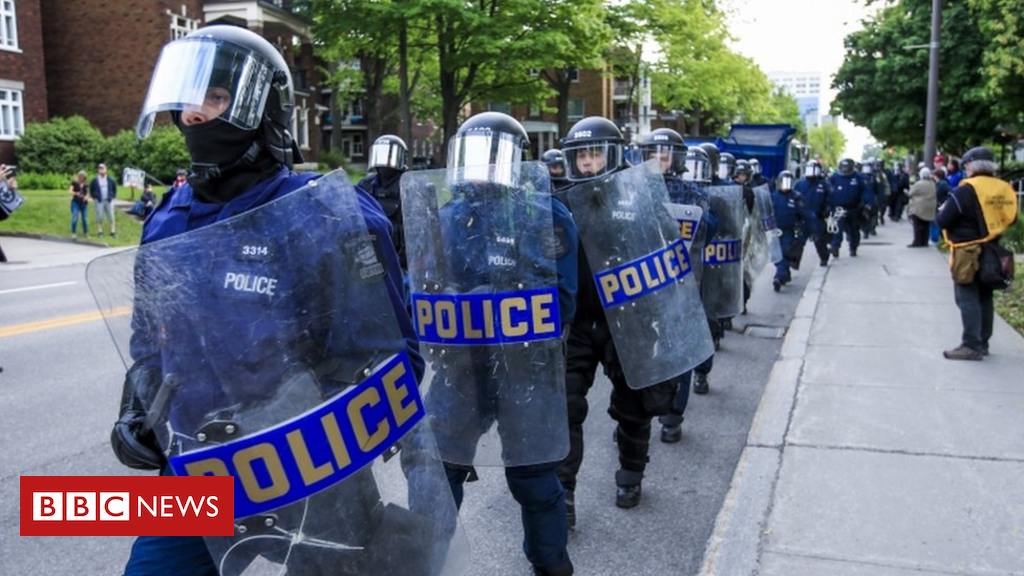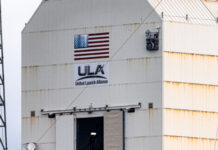Leaders of the G7 group are gathering in Canada for what could be one its most acrimonious summits in years.
On the eve of the meeting, the French and Canadian leaders clashed with US President Donald Trump on the summit’s key agenda – trade tariffs.
Mr Trump, expected to be the last to arrive and first to leave, has imposed steel and aluminium tariffs that have sparked reprisals from trade partners.
But the nations could also clash on the Iran nuclear deal and climate change.
The G7 summit, which groups Canada, the US, the UK, France, Italy, Japan and Germany, begins on Friday in the town of La Malbaie in Quebec.
The leaders of the nations, which represent more than 60% of global net worth, meet annually. Economics tops the agenda, although the meetings now always branch off to cover major global issues.
What were the exchanges on the eve of the summit?
It was mainly France and Canada vs Donald Trump.
Although much has been made of the bonhomie between the US president and French counterpart Emmanuel Macron, the latter was pulling no punches ahead of the talks.
In a tweet, Mr Macron said if Mr Trump wanted to be isolated, the six other nations would sign their own agreement if need be “because these six countries represent values, they represent an economic market which has the weight of history behind it and which is now a true international force”.
Host leader Justin Trudeau has also flirted with a “bromance” approach to Mr Trump but has appeared far more confrontational recently, particularly with the stalling of talks over the North American Free Trade Agreement (Nafta).
He described Mr Trump’s citing of national security to defend his steel and aluminium tariffs as “laughable”.
Never one to back down, Mr Trump fired off defiant tweets, accusing Mr Trudeau of being “indignant” and the European Union and Canada of erecting “massive trade tariffs and non-monetary trade barriers against the US” for years.
“Take down your tariffs and barriers or we will more than match you,” he wrote.
UK Prime Minister Theresa May appeared to take a more conciliatory approach, saying she wanted the EU to act with restraint and proportion in retaliating to the US tariffs.
It is likely that Brexit, in particular trade deals following the UK’s exit from the EU, will also be on her agenda.
What else can we expect in Quebec?
Mr Trump will apparently be the last to arrive and the White House said he would fly out early, on Saturday morning, to head to Singapore for his landmark summit with North Korean leader Kim Jong-un.
So he won’t be there to discuss all of the topics being advanced by Mr Trudeau.
The fives themes for this year’s summit are:
- Inclusive economic growth
- Gender equality and women’s empowerment
- World peace and security
- Jobs of the future
- Climate change and oceans
According to the Leaders’ Programme, Mr Trump will be around for the economic and security issues being discussed on Friday but will miss gender equality and climate change on Saturday.
The US president was very much the odd man out on climate change during the G7 in Italy last year, later announcing his intention to withdraw from the landmark Paris agreement.
Iran is also a big sticking point. Mr Trump recently ditched the 2015 agreement with Tehran that aimed to curb its nuclear programme. This angered the other signatories who have since sought to shore it up.
Almost unnoticed, Giuseppe Conte will be attending his first major outing as the new Italian prime minister.
The G7 – doesn’t that mean protests?
Usually. Although host nations are a bit more savvy these days and tend to hive them off to remote or well-defended areas.
About 400 demonstrators did protest on Thursday night in Quebec, burning the US and other flags of the G7.
The protesters target globalisation, a world of integrated free trade that supporters say has brought more jobs, higher wages and lower prices but which opponents say has damaged communities and has overwhelmingly favoured the wealthy,
Image copyright Reuters
Canadian police said in May that the security threat for the Quebec summit was considered “moderate” and they did not expect a repeat of the kind of anti-globalisation showdown in Genoa, Italy, in 2001.
About 8,000 soldiers and police officers are expected to be on hand during the Quebec event.
What are the US tariffs and what was the reaction?
Little short of a trade war is feared.
Mr Trump announced plans for tariffs on foreign steel and aluminium in March, justifying them on national security grounds.
On 31 May the US slapped a 25% tax on steel and a 10% tax on aluminium from the EU, Mexico and Canada.
Mr Trump has argued that global oversupply of steel and aluminium threatens American producers who are vital to the US economy, though his move has proved divisive even in the US.
The countries affected are outraged. The EU called the move “protectionism, pure and simple”.
A whole host of retaliatory measures have been put in place. Canada has targeted steel, yoghurt and whiskey; the EU bourbon, cranberries, jeans and motorcycles; Mexico pork legs and shoulders, steel, apples, grapes, blueberries and cheese.
What sets Trump apart?
Analysis by Andrew Walker, BBC World Service economics correspondent
The president appears to regard trade as an area where countries either win or lose, measured by whether exports are greater than imports.
Because the US has a trade deficit (it imports more than it exports) he sees it as losing, and that, he believes, is the result of bad deals done by previous administrations.
He also parts from his predecessors in having no enthusiasm for multilateral negotiations, preferring bilateral, one-to-one deals.
And he has shown a much greater readiness to use trade barriers to force concessions from trade partners exemplified by his tweet about trade wars being easy to win: “When we are down $100 billion with a certain country and they get cute, don’t trade any more – we win big. It’s easy!”









